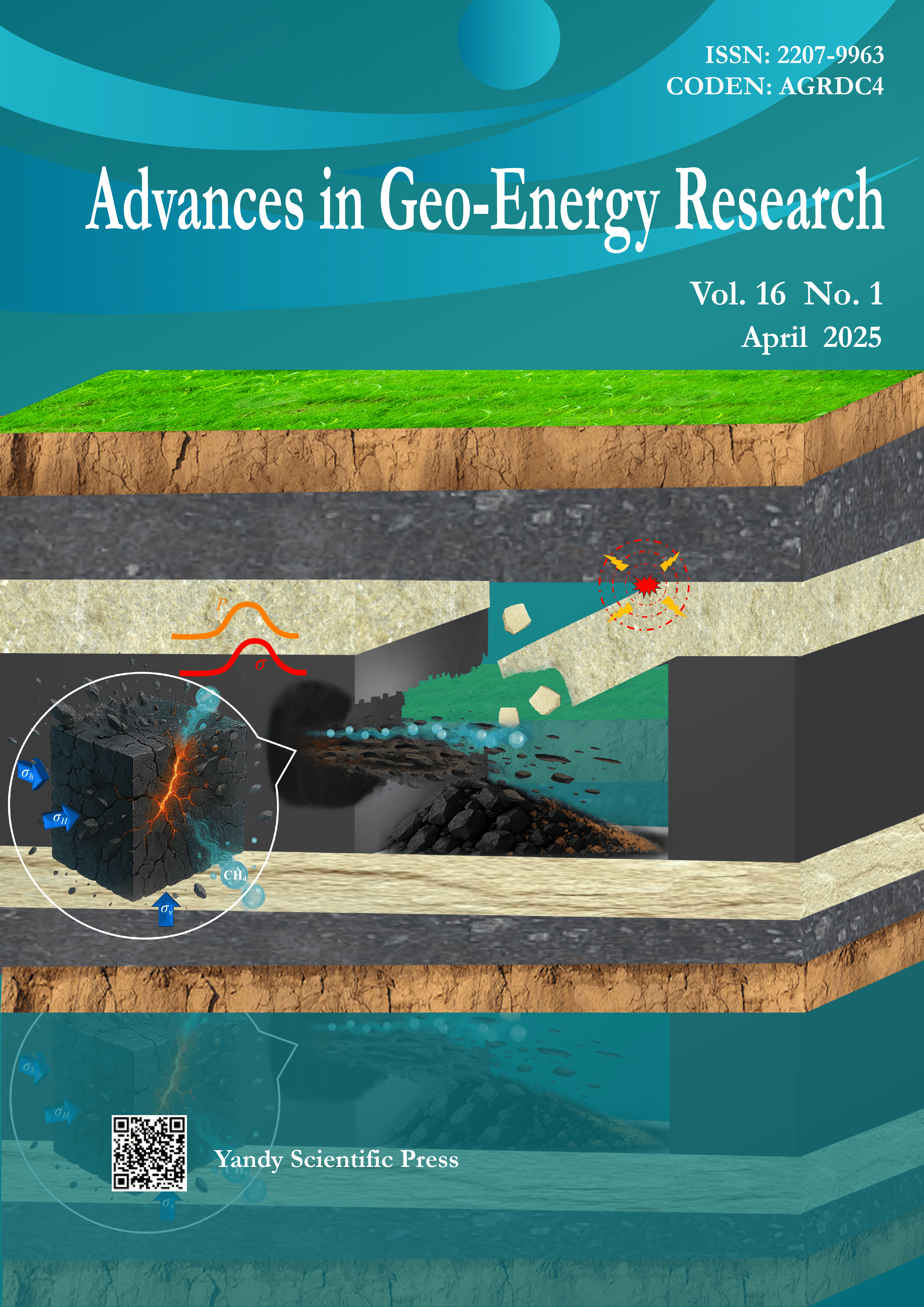Infrared thermal imaging under a macro lens empowers geo-energy exploration and development: Application scenarios and scheme conceptions
Abstract
This study introduces the potential applications of infrared thermal imaging under a macro lens in the realm of geo-energy. Leveraging disparities in the thermal radiation of objects, this technology captures minute thermal signals from small objects through its macro lens, offering benefits such as straightforward sample preparation, rapid testing, and non-destructive imaging. In the context of static attribute characterization of reservoirs, it facilitates the acquisition of temperature data and the identification of macroscopic geological attributes like lithology via machine learning. It also enables precise characterization of microscopic solid components and fluid distribution, based on variances in thermophysical properties, and aids in determining multidisciplinary properties of rocks. In studies concerning dynamic behavior, it allows for real-time monitoring of structural changes during reservoir heating or cooling, the design of in-situ conversion heating schemes for low-maturity shale oil, tracking of fluid-rock interactions and microbial oil extraction characteristics, and provides dynamic information to optimize extraction schemes in energy development and utilization. Although there are challenges in practical applications, innovative ideas and technological progress are expected to overcome these obstacles, supporting the efficient exploration and sustainable development of geo-energy.
Document Type: Perspective
Cited as: Du, S., Bai, L., Zhao, A., Wang, Y. Infrared thermal imaging under a macro lens empowers geo-energy exploration and development: Application scenarios and scheme conceptions. Advances in Geo-Energy Research, 2025, 16(1): 4-7. https://doi.org/10.46690/ager.2025.04.02
DOI:
https://doi.org/10.46690/ager.2025.04.02Keywords:
Infrared thermal imaging, macro lens, geo-energy, reservoir characterization, exploration and developmentReferences
Bera, A., Shah, S. A review on modern imaging techniques for characterization of nanoporous unconventional reservoirs: Challenges and prospects. Marine and Petroleum Geology, 2021, 133: 105287.
Du, S., Bai L. Future potential research hotspots on the precise integration of geology and engineering in low-permeability oil reservoirs. Advances in Geo-Energy Research, 2024, 14(1): 4-7.
Gade, R., Moeslund, T. Thermal cameras and applications: A survey. Machine Vision and Applications, 2014, 25: 245-262.
Ke, C., Sun, R., Wei, M., et al. Microbial enhanced oil recovery (MEOR): Recent development and future perspectives. Critical Reviews in Biotechnology, 2024, 44(6): 1183-1202.
Planinsic, G. Infrared thermal imaging: Fundamentals, research and applications. European Journal of Physics, 2011, 32(5): 1431.
Umar, S, Qureshi, M., Nawaz, M. Thermal imaging and AI in solar panel defect identification. International Journal of Advanced Engineering Technologies and Innovations, 2024, 1(3): 73-95.
Zhao, W., Guan, M., Liu, W., et al. Low-to-medium maturity lacustrine shale oil resource and in-situ conversion process technology: Recent advances and challenges. Advances in Geo-Energy Research, 2024, 12(2): 81-88.
Downloads
Downloads
Published
How to Cite
Issue
Section
License
Copyright (c) 2025 Author(s)

This work is licensed under a Creative Commons Attribution-NonCommercial-NoDerivatives 4.0 International License.
